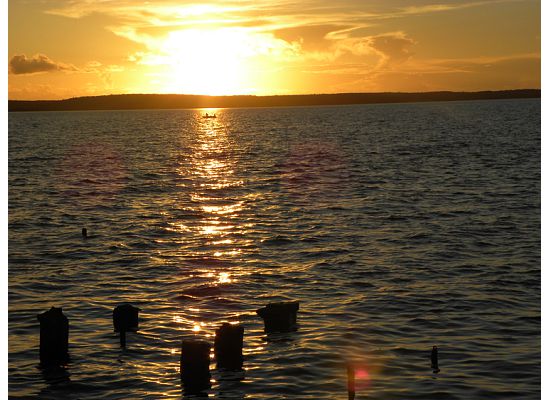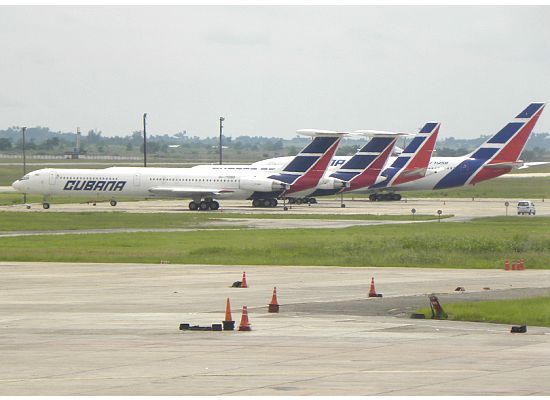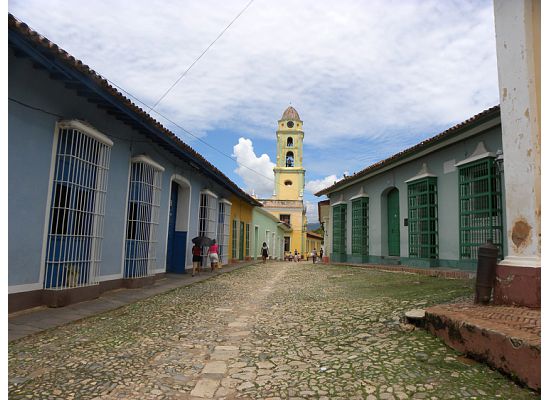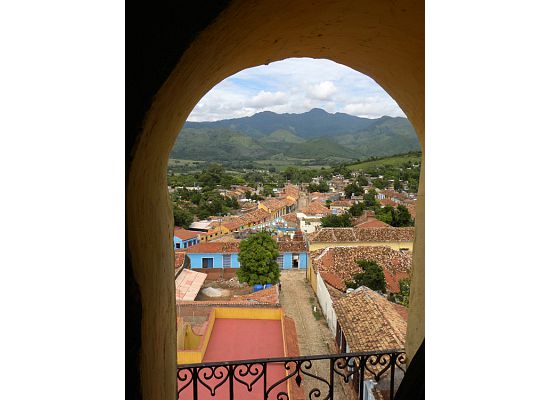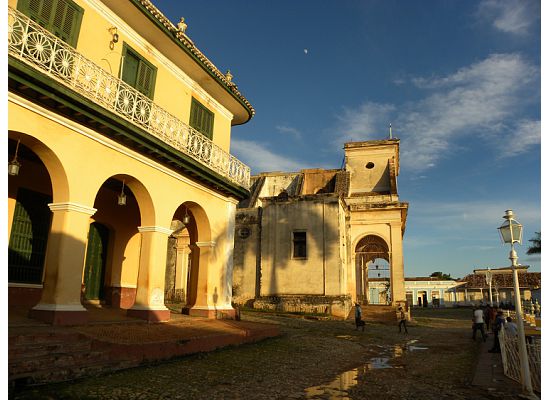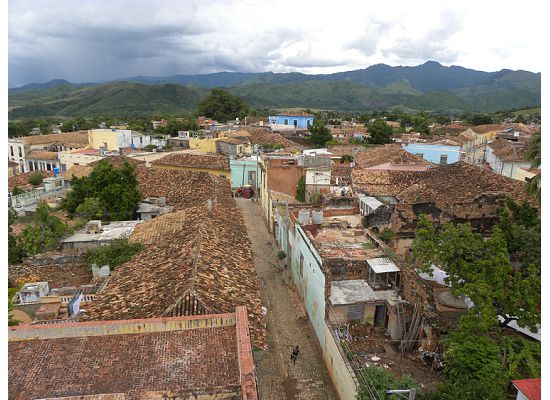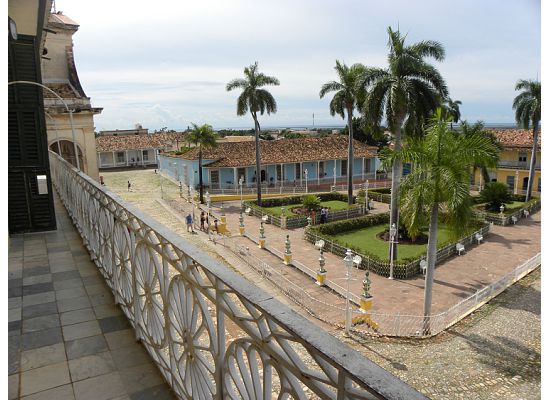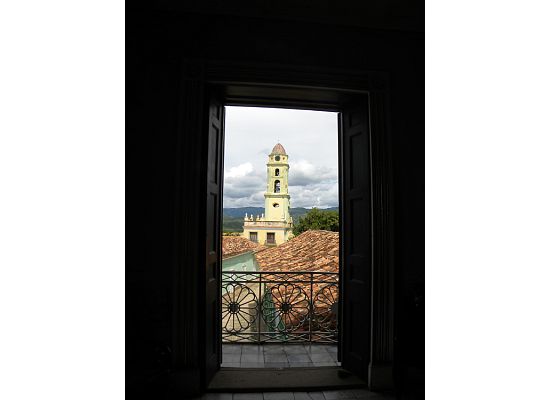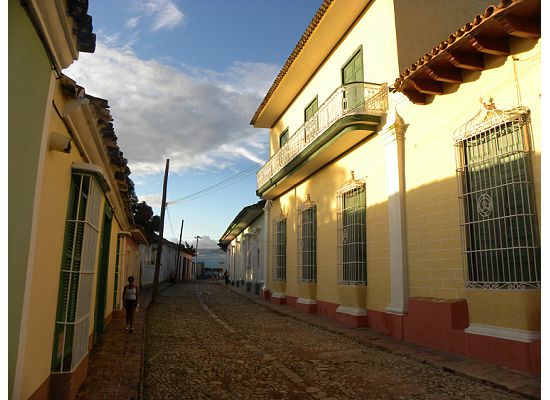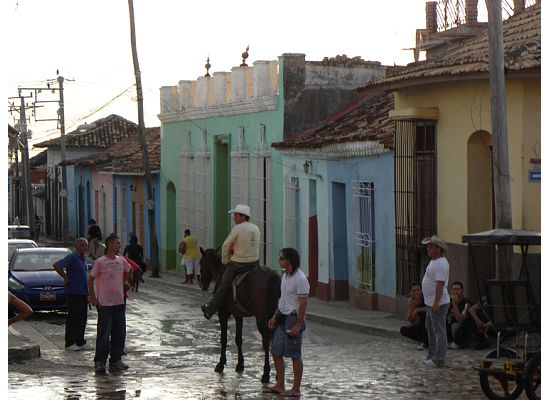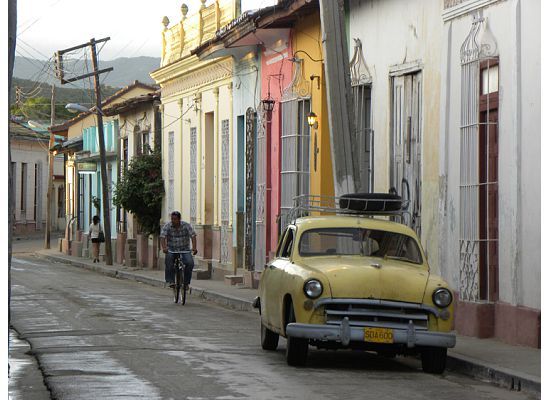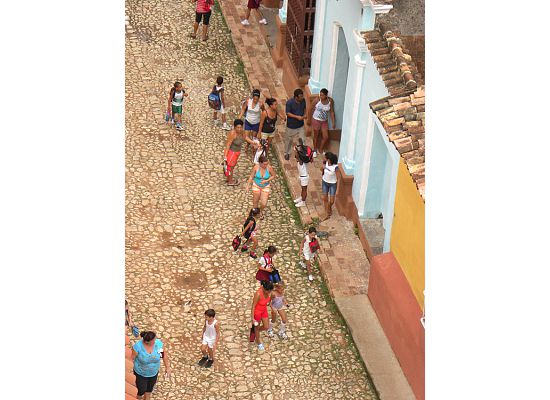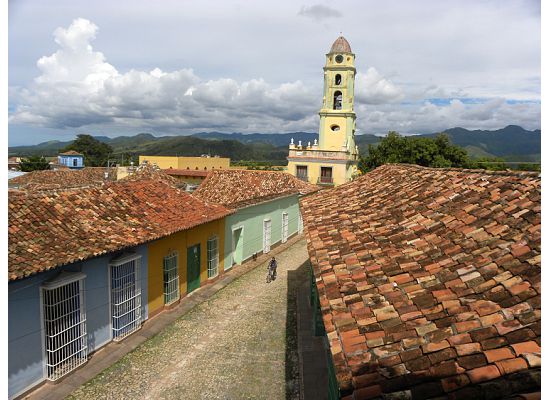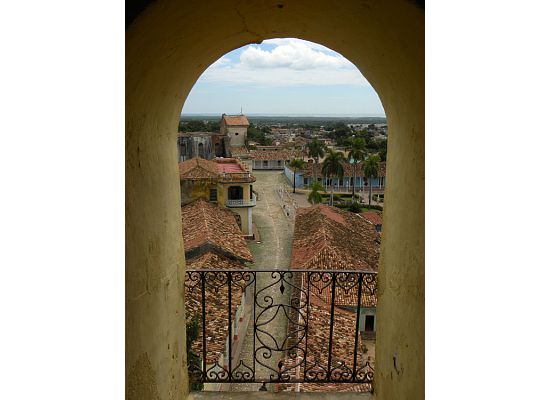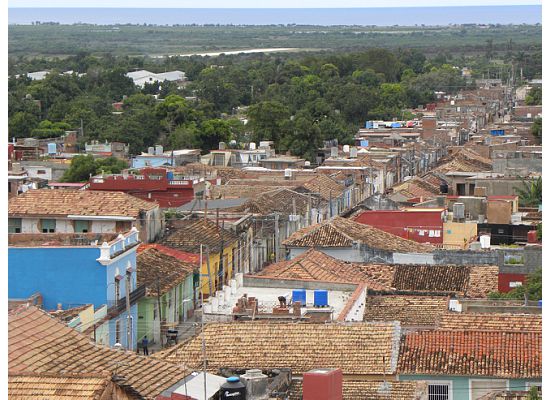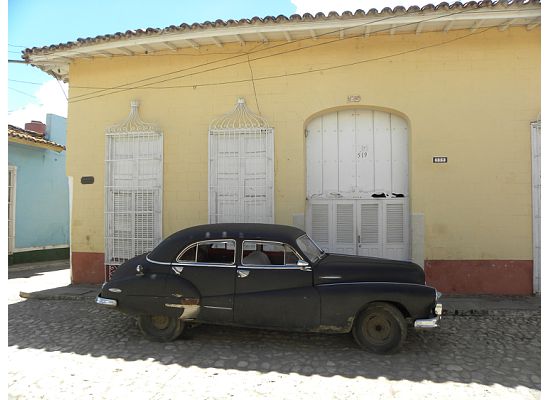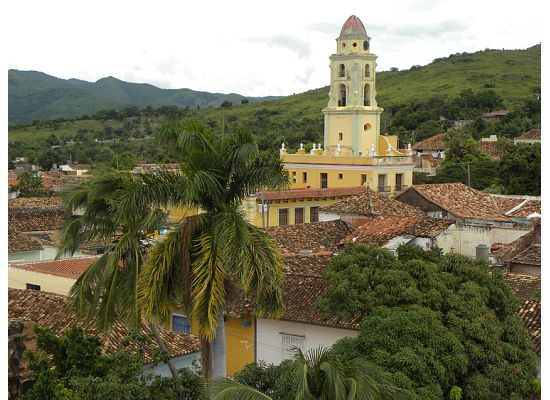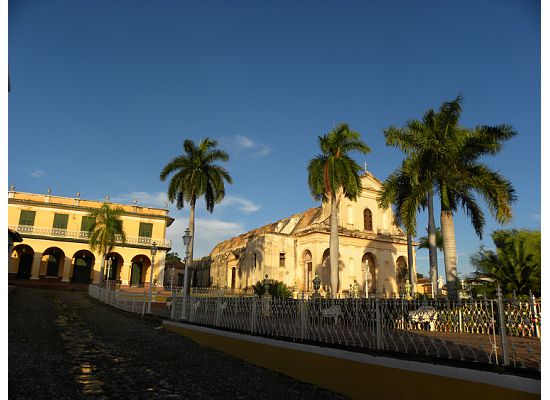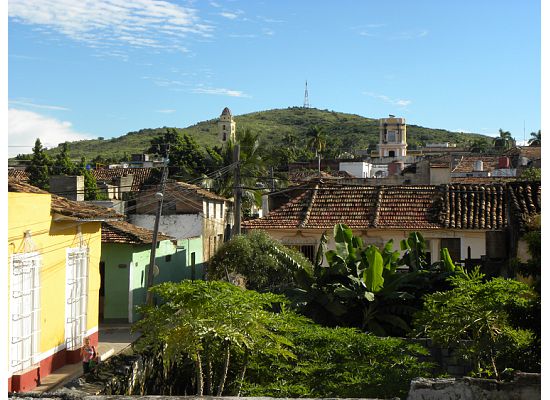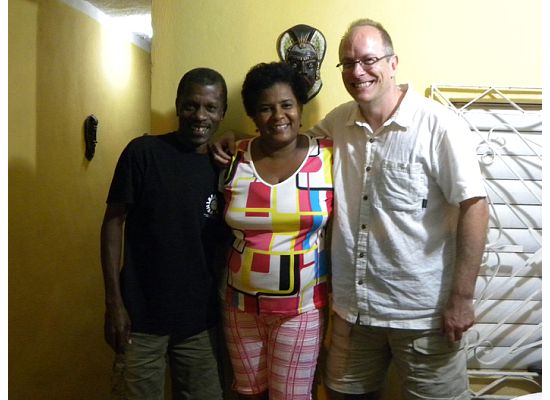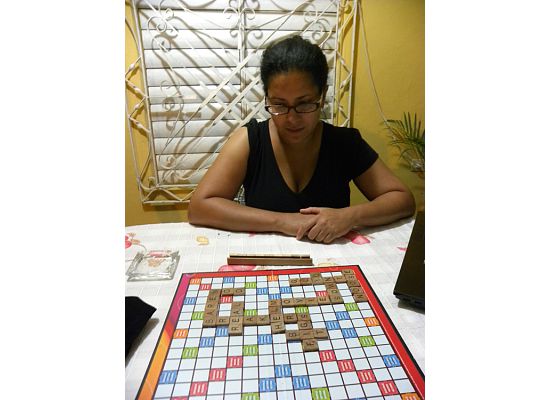Cienfuegos, Cuba
Wednesday, October 26th, 2011We finished up our trip to Cuba with a relaxing 2 nights stay at a Casa in a residential neighborhood of Cienfuegos called Punta Gorda.
I can’t comment on Cienfuegos because we didn’t visit the historic center. No, I didn’t have the shits anymore (isn’t it funny how it always clears up on the last day of vacation?), we were just lazy. But we enjoyed Punta Gorda, a long peninsula on the south end of the city that juts out into the bay. It felt like a beach resort between the lovely views and the great patio of the casa (Casa Los Delfines – my trip advisor review below).
I sat on the patio most of the last day thinking of our experiences on this trip. Some things were as expected, but I had some surprises as well.
Politics
Some people will never feel comfortable with socialism (you never see the word communism here, the word plastered everywhere is socialism). But, having travelled around the Caribbean, Central America, and South America, there is no doubt to me that the average person is better off here than in any other Latin American country covered in my blog.
Cuba’s citizens are given free education (at every level) as well as free health care (including dental). Basic staples are heavily subsidized (1/20th of the market price for milk, eggs, bread, meat, bathroom products etc). Nobody will exist solely on rations but at least it is a basic safety net. You don’t see the poverty in Cuba that you see in almost every Latin country. Cubans are incredibly literate and educated. Free health care means they live longer and healthier and have lower rates of infant mortality – according to the CIA World Factbook, 1) Cuba’s rate of literacy is higher than that of Canada or the USA, 2) its rate of infant mortality lower than both Canada’s and the US. In life expectancy, both Canada (14th in World) and the USA (50th) rank ahead of Cuba (57th). There are many problems in Cuba, most economic, but if I had to chose I’d rather be an average person in Cuba than an average person in any other Latin American country.
People
We met so many nice and interesting people on this trip. Cubans are well spoken and polite – again, a product of the educational system (although there were exceptions, like the touts in Havana). Cubans also struck both of us as quite proud of their homeland and history.
Market System
One thing that surprised me was the extent to which the government has opened up the market system with the allowance of casas and paladares, I was struck by the prevalence of both everywhere we went. I was also surprised by how nice some of the casas and paladares are. I’m told many of the changes have come in the last year.
Communications
About 15 years behind the rest of the world. Email is limited to a few internet locations in town (all extremely slow). Some people have cable internet at home (mostly casa owners) but this is even slower. Internet is essential to what I do now and there is no way a business traveler can work effectively here if he/she needs internet communication. This alone would stop me from coming back for any length of time.
Banking
Also stuck in the dark ages. Very few ATMs in entire country, even if they work they only work for credit cards (not debit cards). And with every card transaction you are smacked with an 11% commission! Plus, with the whole dual currency thing (where tourists have to use convertible pesos) a whole industry has grown around screwing the tourist. It was an ordeal every time we needed to get cash (either exchanging cash or getting from credit card) and honestly we know we got screwed every time.
Food
Not as bad as everyone says as long as you are eating in a casa or paladar. In fact, I think the stomach problems we had came from eating in our government run, 5-star hotel in Havana. It was simple but good, limited to the usual (fish, lobster, shrimp, chicken, and pork with rice, potatoes, avocado on the side. Deserts usually fruit or flan). We were prepared for the worst so it was a bit better than everything we had read. Tip – go to a paladar where you see lots of people, otherwise you’ll get stale leftovers.
Outside of the tourist infrastructure (ie casas/paladars), food is seriously lacking. I didn’t see a food market on our trip – I’m sure there are food markets but where are they? You don’t see “food stores” except for the ration shops. No fast food except for the very occasional pizza shop (I saw one in Trinidad). There are tourist shops where chips and chocolate bars are sold at extremely inflated prices (apart from this, along with soft drinks, water and run, all you see are empty shelves). Unless you want to sit down in a paladar you won’t find any street food. That’s why I recommend staying in a casa where the owner provides you with food, otherwise eating will be a constant issue.
I compare this to a country like Thailand where there seems to be a market or congregation of food carts at every corner and where you’ll never go hungry.
Basically, summing it up, Cuba is a developed 1st world society within a 3rd world economy. Basic communications/banking are worse than anywhere I’ve ever been. Things are getting better according to people but there is a long way to go.
Heat
Really hot! I think the major factor is a very high level of humidity.
Lissette & the Latin thing
Its always interestingseeing how people react to Lissette in different places we go. In the Dominican Republic they knew she was Latina but not Dominican – she got a few curious questions but that’s it. In Colombia they figured her for a local and she felt that she was being judged for being with a white guy – men gave her glares and women disregarded her (she felt they flirted with me in her presence). We both loved Colombia but that was about the only aspect she didn’t feel comfortable with. In Cuba they were certain she was Cuban. She looks Cuban and on top of that, as we found out, many Cubans are named Lissette. There was no animosity towards her but there were many questions and then disbelief that she was not Cuban. At the airport, leaving, the customs officer looked up and down at her while studying her passport and then asked her a blizzard of questions – trying to figure out how it is that a Cuban looking woman can be born in the US but be a Canadian. Again, no animosity, just lots of curiosity.
We booked our flight to Cuba with Cubana – the flight from Montreal however is operated by a Canadian airline called Flair Air. It was totally no frills and the food should not be touched, but apart from that it was fine and everything was on time. It reminded me of travelling to Africa in the 1980s because the plane was a collection of weird individuals – locals, retirees going down for the winter, businessmen, a few tourists…It was actually pretty interesting.
Here is my review of the Casa Los Delfines on tripadvisor:
I rated this a 4 out of 5 because there’s no 3 1/2 and I didn’t want to be too harsh in giving it a 3.
Pros: 1) The room is large and comfortable, 2) the private terrasse is amazing (the highlight), 3) breakfast is really good, 4) Magalis makes a fantastic mohito (best we had in Cuba).
Cons: 1) no dinner is served and when asked Magalis said that the kitchen is undergoing renovations. She suggested the restaurant next door (there’s where we went – it was fine). I mentioned to her that she should mention this when travellers look to book with her as many want the full casa experience (maybe we were spoiled in Trinidad). Looking at all the reviews however, it seems apparant that Magalis has never offered meals in her casa. My complaint is not with going to the restaurant – it was with what I felt was dishonesty on the part of Magalis. 2) some issues with cleanliness – a couple of very dirty rugs on the floor, a moldy bath mat, hundreds of little ants all over the main shelving. Lumpy pillows that need to be changed. With a little more cleaning the room would be perfect. 3) all in all, was quite expensive. Casa was the most expensive we encountered and, combined with having to go to the restaurant every night, we ended up paying substantially more than we did anywhere else. Magalis, although sweet, is above all a business woman.
All in all, a beautiful casa but needs a bit more maintenance. I think people should also be aware of the meal arrangements.








